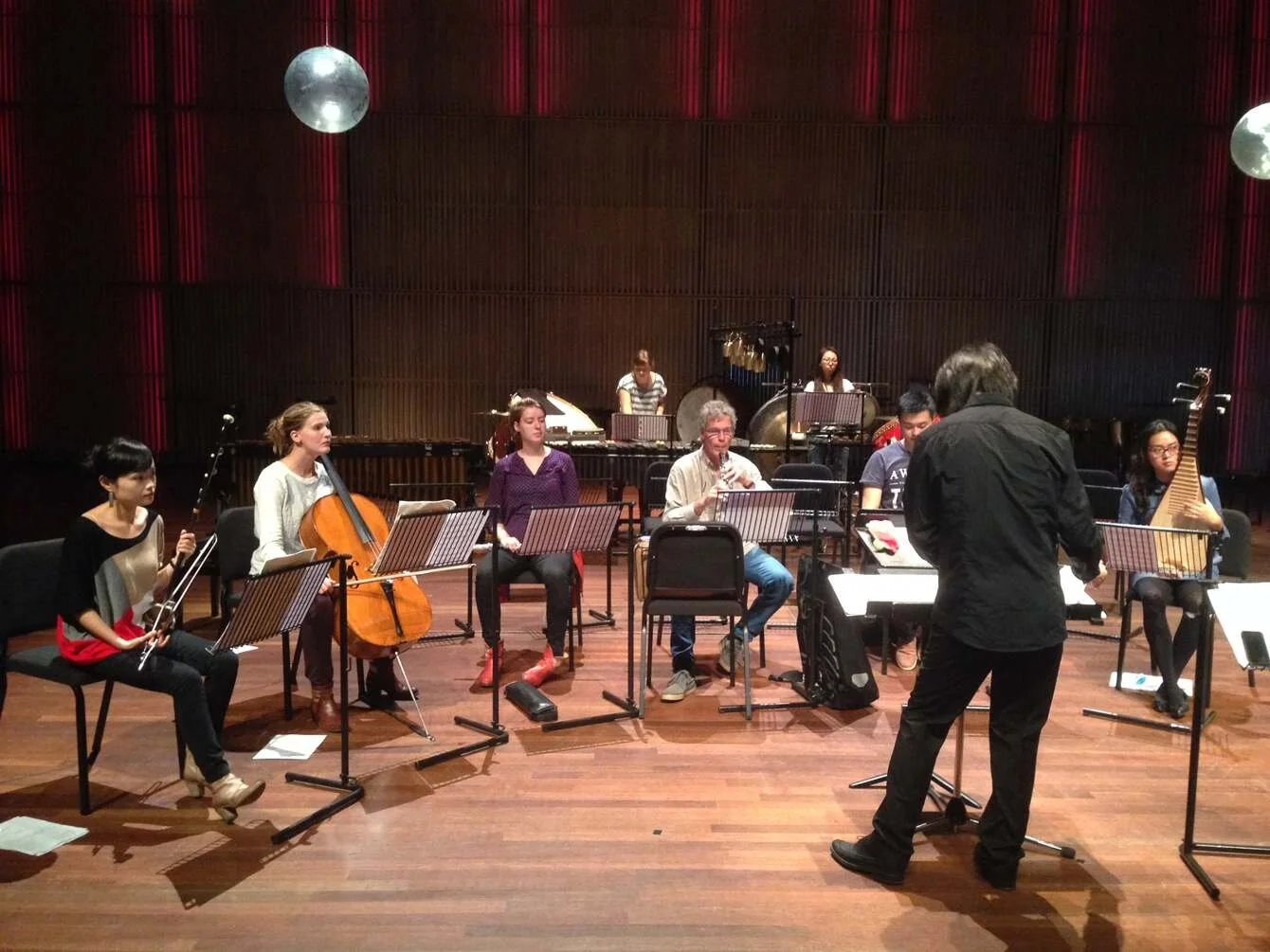Instrumentation: 10 players (flute, oboe, sheng (soprano and alto), guzheng (retuned), pipa, harp (retuned), 2 percussion, erhu, cello)
First Performance: Premiered by the Atlas Ensemble, conducted by Artyom Kim. Muziekgebouw aan' t IJ, Amsterdam, September 7, 2014.
Dedicated to Chou Wen-chung.
Duration: 8 minutes
More Marginalia was a winning score of the Atlas Composition Competition 2014.
Movement Three, performed by the Atlas Ensemble, conducted by Artyom Kim:
This work is a revised and rescored version of Marginalia for traditional Chinese ensemble (2012, written for the Taipei Chinese Orchestra). In doing so, I’ve conceived of mirrored relationships between the newly introduced Western instruments and their counterparts. Pairings that are related by timbre, material, or function include the flute and oboe replacing dizi and suona, oboe paired with sheng, harp with pipa and guzheng, and cello replacing gehu and paired with erhu, while the various percussion instruments already exist in more culturally fluid amalgams (e.g. gongs/luo, bass drum/dagu).
Marginalia are notes in the margins, traces of commentary, explanation, digression, etc. left by a reader on a personal copy of a book or manuscript. As a reader of texts, both literary and musical, I fall into this habit often, inscribing private annotations for any numbers of purposes, including highlighting a particular point for further contemplation, drawing connections to other passages, or disagreeing with a statement. (One reason why I don’t feel entirely comfortable with most e-readers is that they make the practice of notating marginalia unsuitably difficult at present). I was thinking particularly of the practice of leaving colophon inscriptions on Chinese scroll paintings.
My piece contains at its core aspects of musical marginalia, including several fragmented allusions to my piece Windswept Cypresses (2005), which serve as launching points for entirely new commentaries and paths. What begins as marginal inscriptions and notes to myself results in a series of quite radically different transformations. This piece is dedicated to Chou Wen-chung with admiration.
Anthony Cheung
